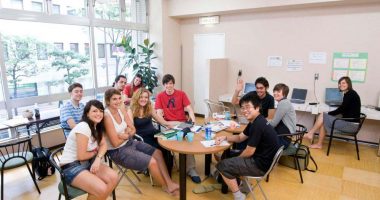Like other developed countries, the basic requirement to be eligible to enter higher education in Japan is 12 years of education. Students from countries that do not yet have a 12-year education system can attend one of the accredited languages schools which offer pre-college courses (大学入学のための準備教育課程). Broadly speaking, there are three types of higher education institutions in Japan.
- Senmon-gakko (specialist schools)
- Short-term universities
- Universities
Senmon-Gakko
Senmon-gakko (専門学校) are specialist schools that offer 2-year courses. The courses are typically vocational (hairdressing, fashion, caring, etc.); although there are schools that offer more generalist courses such as “business”. Senmon-gakko are much easier to enter than universities, and many accept students on the basis of submission materials alone (no interviews or entrance examinations). Some are also willing to consider students who have no graduated from high-school and so would not be eligible to enter universities, which are far more strict when it comes to entry requirements. There are over 3,000 schools in Japan (around 350 in Tokyo) and over 90% of these are private institutions.
Total tuition fees vary depending on course, but they the cheapest of all the higher education options in Japan at around ¥3 million ($19,788) on average. This is largely because they are 2-year courses versus 4-years for university, but also the nature of the courses and the lack of facilities that you might find in the larger campuses of universities helps keep costs down.
Short-term Universities
Short-term universities (短大) are similar to specialist schools (2-year courses) but less vocationally focused (like universities, students will be required to study other subjects outside of their chosen one). There are around 400 short-term universities in Japan and in terms of cost they are slightly more expensive (around 20%) than senmon-gakko.
Universities
Most students entering higher education will opt to go to university (大学). As you might expect, for entry to the major corporations and international companies a degree from a respected institution is a must. There are around 800 universities in Japan, and they can be further broken down into three types:
National
National universities (国立大学)—as their name suggests—are supported by the state and ultimately paid for by the tax payer. They tend to be bigger institutions with a large budget. There are around 90 national universities in Japan—the University of Tokyo and the University of Kyoto being the two most famous. Being state-funded they are the cheapest in terms of tuition fees which total approximately ¥5 million ($32,980) over the course of the 4 year study period.
Public
Public universities (公立大学) are run by the prefecture in which the university resides and funded by taxes from the citizens in that prefecture (in Japan taxes are paid to cities and governments like council tax in the U.K. or state tax in the U.S.). They tend to be smaller institutions compared to national universities, but the key difference is that students who live in that prefecture pay less school fees than those that don’t. There are about 100 public universities in Japan. Tuition fees levels are similar to national universities.
Private
Private universities (私立大学) do not receive state funding and are therefore more expensive than both national universities and public universities. They tend to have better facilities and each have their unique characteristics. There are around 600 private universities in Japan and they account for over 75% of student numbers. Keio University, Waseda University, and Sophia University are three of the most famous. Private universities are the most expensive of the three costing on average ¥7 million ($46,173) for humanities and ¥8 million ($52,769) for science courses (full period of study).

